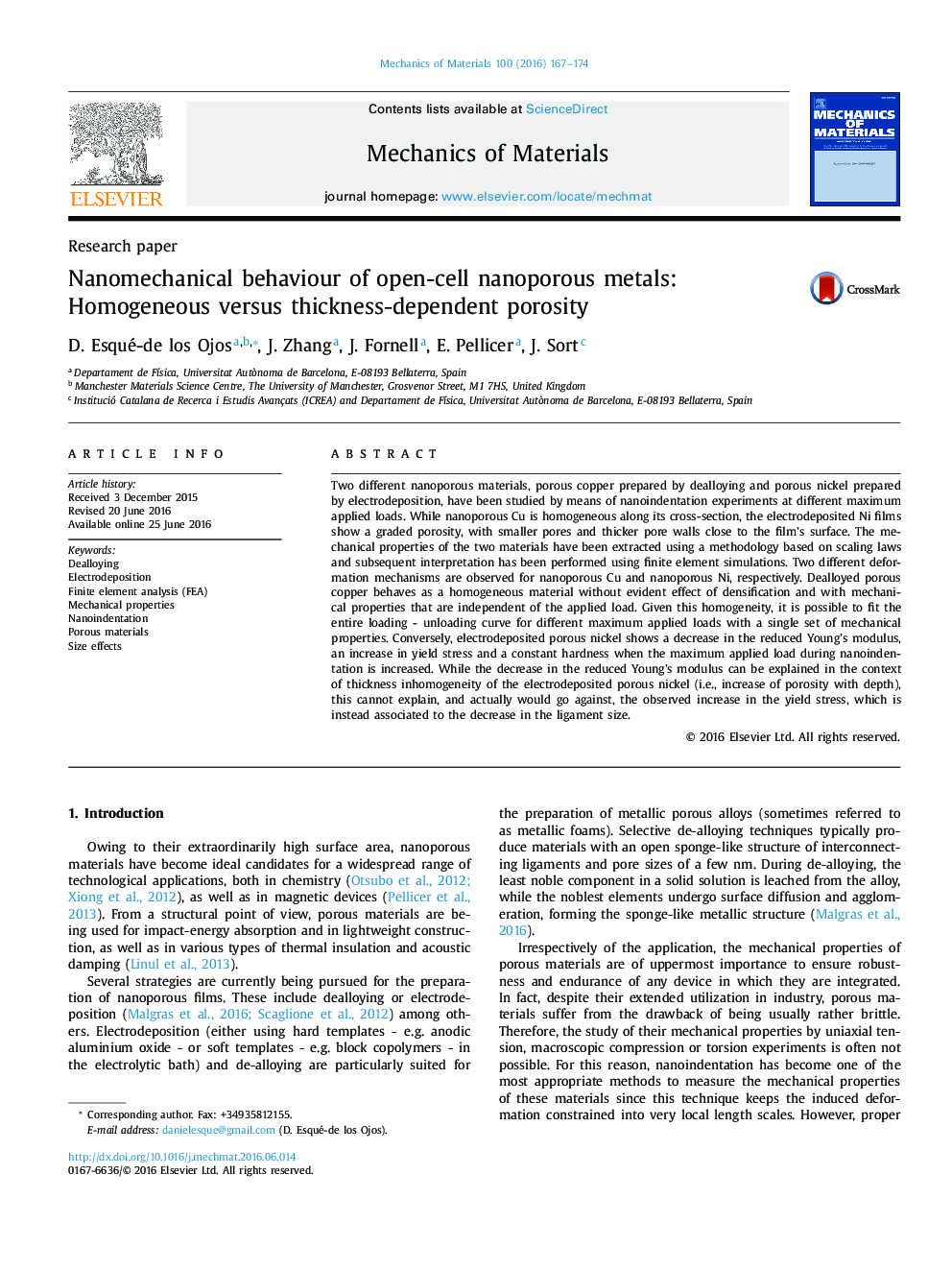| کد مقاله | کد نشریه | سال انتشار | مقاله انگلیسی | نسخه تمام متن |
|---|---|---|---|---|
| 799522 | 1467439 | 2016 | 8 صفحه PDF | دانلود رایگان |
• Extraction of a unique set of mechanical properties for dealloyed porous Cu through Berkovich nanoindentation, proving densification effects can be disregarded and that a single simulation can capture the entire range of loads used during experiments.
• Evolution of mechanical properties in electrodeposited porous Ni due to its thickness-dependent porosity, precluding the use of a unique set of mechanical properties during finite element simulations to capture the entire range of loads used during experiments.
• Application of a Hall-Petch-like expression to correlate the reduction in ligament size with the increase of yield stress in the electrodeposited porous Ni while, at the same time, the reduced Youngs modulus increases due to the increase in porosity.
Two different nanoporous materials, porous copper prepared by dealloying and porous nickel prepared by electrodeposition, have been studied by means of nanoindentation experiments at different maximum applied loads. While nanoporous Cu is homogeneous along its cross-section, the electrodeposited Ni films show a graded porosity, with smaller pores and thicker pore walls close to the film’s surface. The mechanical properties of the two materials have been extracted using a methodology based on scaling laws and subsequent interpretation has been performed using finite element simulations. Two different deformation mechanisms are observed for nanoporous Cu and nanoporous Ni, respectively. Dealloyed porous copper behaves as a homogeneous material without evident effect of densification and with mechanical properties that are independent of the applied load. Given this homogeneity, it is possible to fit the entire loading - unloading curve for different maximum applied loads with a single set of mechanical properties. Conversely, electrodeposited porous nickel shows a decrease in the reduced Young’s modulus, an increase in yield stress and a constant hardness when the maximum applied load during nanoindentation is increased. While the decrease in the reduced Young’s modulus can be explained in the context of thickness inhomogeneity of the electrodeposited porous nickel (i.e., increase of porosity with depth), this cannot explain, and actually would go against, the observed increase in the yield stress, which is instead associated to the decrease in the ligament size.
Journal: Mechanics of Materials - Volume 100, September 2016, Pages 167–174
